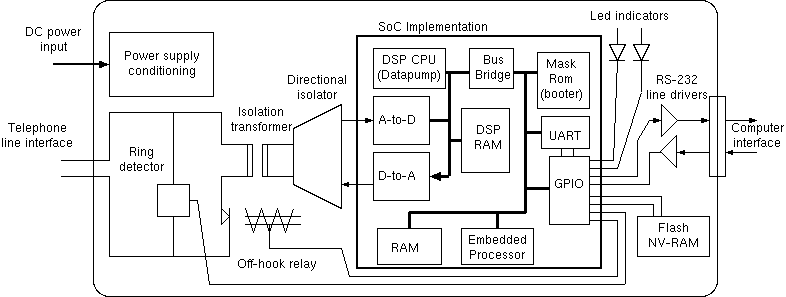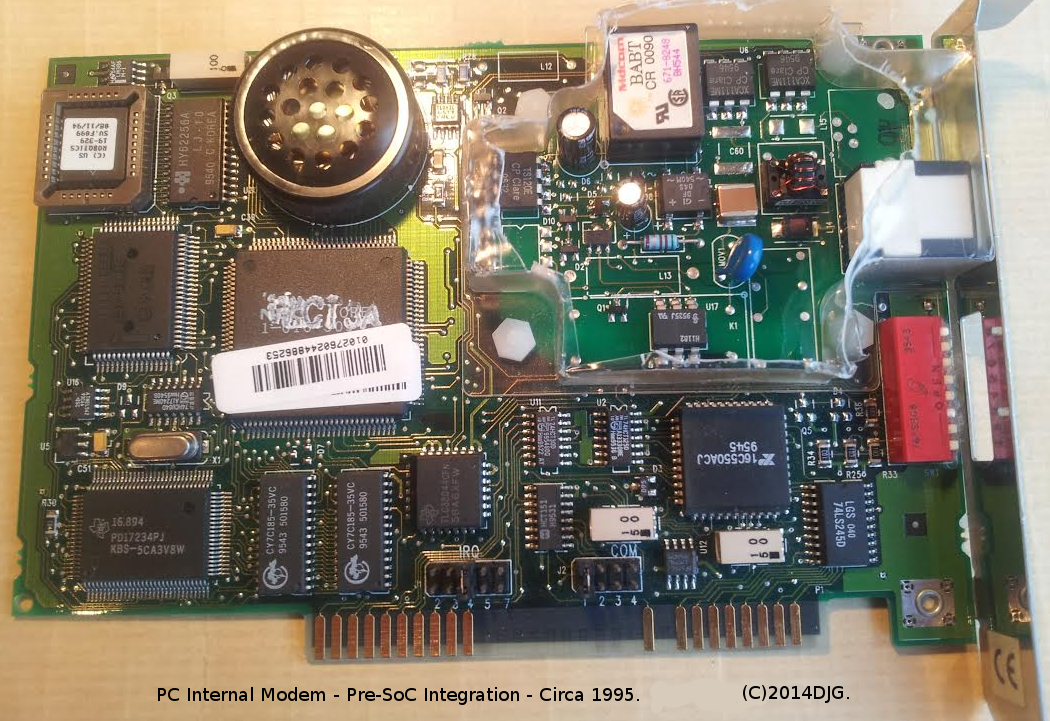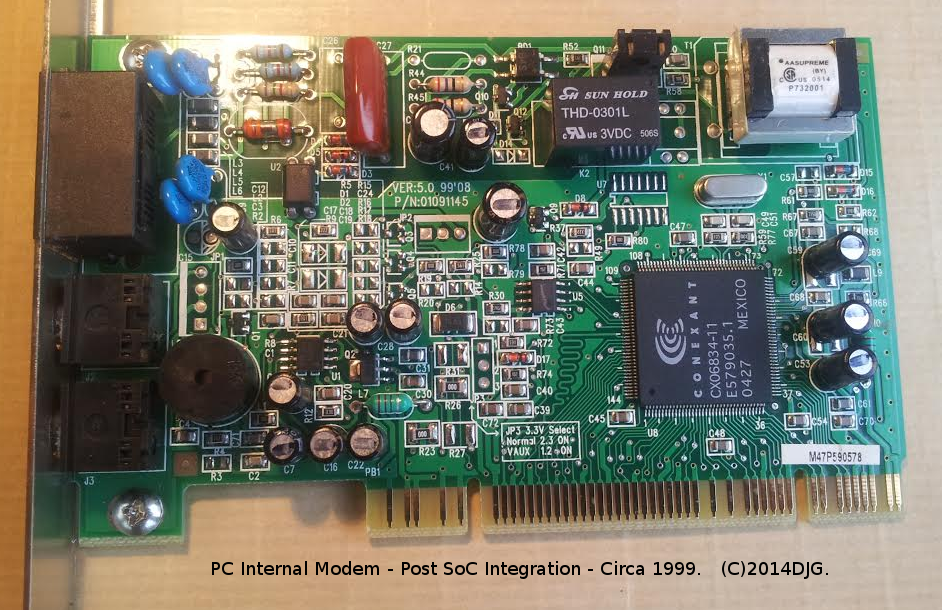
Typical structure of the modem product today (using a SoC approach).

A modern implementation would integrate all of the RAM, ROM, ADC and DAC and processors on a single SoC.
The RS-232 remains off chip owing to 24 volt and negative supply voltages whereas the SoC itself may be run at 3.3 volts.
The NV store is a large capacity Flash ROM device with low-bandwidth serial connection. At system boot, the main code for both processors is copied from the Flash to the two on-chip RAMS by the small, mask-programmed booter. Keeping the firmware in Flash allows the modem to be upgraded to correct bugs or encompass new communications standards.
GPIO is used for all of the digital I/O, with the UART transmit and receive paths being set up as special modes of two of the GPIO connections.
In the next two photos we track the integration of internal modem NICs (network interface cards). These replace the RS-232 serial port with a UART that is connected to the system bus.


| 19: (C) 2008-17, DJ Greaves, University of Cambridge, Computer Laboratory. |